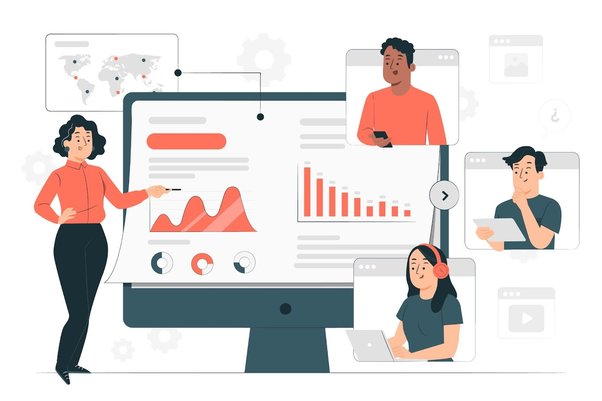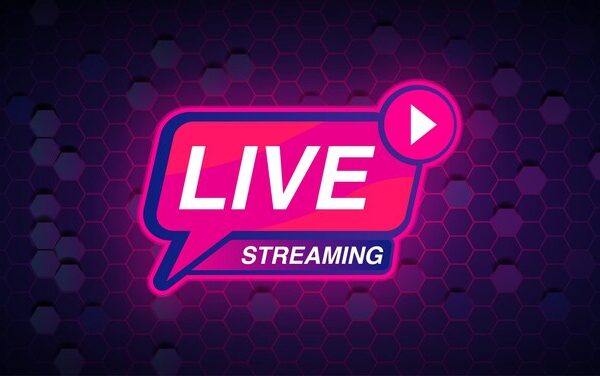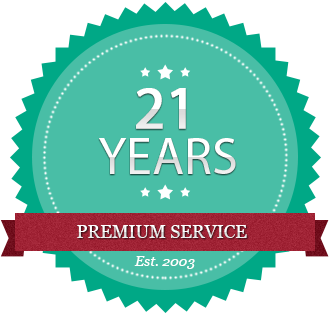When the pandemic struck and physical meetings were banned, the world was left in disarray on how to conduct events without putting lives in danger. Webinars emerged as a potent marketing tool for companies seeking a safer alternative to engage with their target audience.
Implementing an effective marketing strategy for webinars is a brilliant way not only to reduce operational costs but also to build trust with prospects even without meeting them in person. After all, physical events can be an expensive and exhausting undertaking. As such, many businesses are using webinars as a powerful marketing tool.
To do this, you’ll need valuable and relevant content for your audience and a clear-cut strategy on how to deliver it effectively and with impact. You can have the best webinar content, but without the right marketing strategy, people won’t necessarily come and be convinced to do business with you. You need the right approach to ensure your marketing efforts bear fruit.
If you have an upcoming webinar, this blog is a helpful guide that will help you understand how to execute a successful webinar.
What is Webinar Marketing?
 Let’s start by understanding what a webinar is. A webinar is an online event where one or multiple speakers can deliver a presentation to an attentive audience. Typically, webinars generate leads, and marketers use them to promote, elucidate, and contextualise brand messaging and products.
Let’s start by understanding what a webinar is. A webinar is an online event where one or multiple speakers can deliver a presentation to an attentive audience. Typically, webinars generate leads, and marketers use them to promote, elucidate, and contextualise brand messaging and products.
Impactful webinars are not only engaging and interactive for attendees but also present a data-rich opportunity for marketers. When executed effectively, webinars have the potential to win prospects over and nurture existing customers.
Webinar marketing encompasses any marketing activity organised and conducted through a web platform. This can include social media promotions, thought leadership webinars, in-depth panel discussions, sales pitches, and more.
Webinar marketing is interactive in nature. They give attendees the power to ask the presenters questions, participate in polls and surveys, download resources, and convey their level of interest in your services and readiness for a conversation with the sales team.
Hosting webinars can become a potent data tool for your business. They offer valuable insights into your customers and contribute to the success of your future endeavours.
So, how do you plan and execute an effective webinar?
Understanding Your Audience
 Identifying Target Audience
Identifying Target Audience
To gain more webinar registrations, you need to know who your target market is. Before crafting your killer webinar marketing strategy, conduct thorough research to identify your target demographic. Consider factors such as age, interests, and pain points to tailor your content effectively.
Tailoring Content to Audience Needs
Once you’ve pinpointed your audience, you can now start crafting the webinar program. Create content that directly addresses their needs and challenges. Understanding your audience’s motivations will enable you to deliver valuable and relevant information. Here’s a simple guide that can help:
- Examples of how your product or service would benefit them
- If they could change anything about their present life, what would it be?
- What do they want to accomplish? What are their goals?
- Why can’t they change their present circumstances? What obstacles are hindering them?
- Describe the problem your product or service solves and how it aids customers in reaching their goals.
- What will they feel if things don’t work out as planned? If they get what they want, how will they feel?
Use Audience Insights for Marketing
Leverage data analytics and feedback mechanisms to gain insights into your audience’s behaviour. This information can shape your webinar marketing strategy, helping you refine your approach for the future. You can also use this for your next webinar promotions so that you’ll know how to catch your target audience’s attention better.
Planning Your Webinar
 Setting Clear Objectives
Setting Clear Objectives
Don’t go into webinar planning like a headless chicken. One of the most critical aspects of webinar marketing is to have clearly defined goals. Whether lead generation, brand awareness, or education, setting clear objectives will guide your planning and execution.
Just start with one webinar goal. You may be too eager and want to pursue multiple goals to get multiple positive results, but that won’t help you. Juggling too many things at once can be your downfall. Focus on one goal at a time, especially if this is your first time planning a webinar or if you have limited resources. Make sure your goal is aligned with your business. You can also get input from all company stakeholders to ensure your goal fits perfectly with your organisation.
Choosing Relevant Topics
Select the webinar topic that resonates with your audience. Consider trending industry issues, frequently asked questions, or challenges your audience faces. A compelling webinar topic will hook your target audience and get them talking to their peers who might also be interested in checking out your content.
Selecting the Right Format and Structure
Decide on the webinar format that best suits your content – whether it’s a presentation, panel discussion, or Q&A session. Structure your webinar to maintain engagement throughout.
Webinars come in a variety of formats. Here are some examples to help you out.
- Interviews – feature a live conversation with one or more industry experts.
- Demo webinars– highlight the general characteristics of your product while also answering product-related inquiries from your guests.
- Product or service updates – provide information about the most recent product/service news, features, and enhancements.
- Success stories – are comparable to interviews in that clients serve as guest speakers. Clients must be willing to disclose the outcomes of using your product.
- Ask Me Anything (AMA) webinars– increase interaction with your audience. Typically, the webinar is hosted by a high-level expert or company executive whose sole responsibility is to answer questions from attendees.
- How-to webinars- are 100% instructional and are designed to assist attendees in quickly solving a problem or pain.
Remember that the purpose of your webinar will influence the format you choose.
For example, if the purpose of your webinar is to raise brand awareness and promote oneself as an expert, you can have an interview webinar with industry professionals. Associating your business with well-known industry figures will offer you validation and raise your visibility.
Establishing a Realistic Timeline
Create a timeline that allows for ample preparation. Adequate time for promotion, content creation, webinar recording and technical setup is crucial for a successful webinar.
Creating Compelling Content
 Crafting an Engaging Title and Description
Crafting an Engaging Title and Description
Your title and description are the first things your potential webinar attendees see. Craft them to be compelling, clearly conveying the value of what you will present.
Finding the Right Webinar Speakers
Whether or not you decide to hire guest webinar speakers (external) or someone from the inside will be heavily influenced by the structure and goal of your webinar. For example, if you are running a product demo, you may not need to invite an external speaker. After all, a member of your product team might be the best speaker for such a webinar. On the other hand, bringing in a guest speaker makes the most sense if you’re arranging an interview or a success story webinar.
Making an Outline for Your Webinar
When hosting a webinar, you can’t just show up and start talking without any preparation. On the contrary, you must design an engaging webinar structure that will allow you to keep people’s attention while providing as much value as possible. Here are some tips you can follow:
- Begin the webinar by managing attendees’ expectations- list what you will talk about and the benefits the audience will get by finishing it.
- Add statistics and relevant data to back up your points- research your issue thoroughly to back up your perspective and boost your credibility.
- Prepare for the Q&A session- preempt questions from your webinar audience so you can answer them well.
Developing Informative and Valuable Content
Create content that educates and adds value. Share actionable insights, case studies, or exclusive information that attendees can’t find elsewhere.
Incorporating Visuals and Multimedia
Enhance engagement by integrating visuals such as slides, infographics, and videos. A visually appealing webinar presentation keeps participants focused and interested. Here are some tips:
- Remember the 10-20-30 rule- create 10 slides with a maximum delivery time of 20 minutes and font size 30.
- Use your company’s colours and fonts-don’t come up with a unique set of tones, colours, and fonts for your slide presentation. Your deck needs to be consistent with your business’ branding. Use your company’s colours and fonts to reaffirm your brand identity.
- Maintain a clutter-free design – text should not fill your presentations. Otherwise, this will either overwhelm or bore your audience. Keep your writing brief and include a few sentences explaining the issue you’ll discuss. The pictures you use in the deck should assist your listeners in visualising your presentation.
- Promotion and Outreach
Once you’ve established your webinar, the next crucial step is to promote your webinar. Spreading the word effectively involves selecting the proper social media channels to engage with your target audience. The key is to tailor your approach based on your existing audience and how you typically connect with them.
Create a Webinar Landing Page
The next step is to design a landing page where people can learn more about the webinar and sign up to attend it. To create a registration page that converts attendees successfully, you must blend a clear structure, great imagery, and enticing language that speaks directly to your target demographic.
Registration Page
Your webinar topic, goal, audience, and brand identity will determine your landing page. In terms of design, we propose keeping it simple and employing the following structure:
- Catchy headline- this can be the webinar’s title or an opening hook to pique people’s interest and keep them reading.
- Description or primary copy- this can explain the webinar’s main points and outline the benefits the potential audience will receive if they attend the event.
- Call to Action – will outline the next steps potential attendees should take. “Register” is most often the call to action one should take.
- Registration form- create a registration form to collect people’s information. Make it short and easy to understand.
- Time and date- if it’s a one-time webinar, specify the day and time when individuals can join the live event. However, if you plan to hold recurrent webinars, add a drop-down list with several date possibilities from which people can choose.
- Visuals (photos or videos)- use customised graphics or videos to add personality to your webinar registration page.
- Brief bios of your webinar speakers– what makes the webinar host and visitors qualified to run the session? Write short bios to introduce your speakers appropriately.
Direct Marketing via Email
Use email marketing to engage with your existing audience and attract potential attendees. Craft compelling emails and encourage recipients to forward or invite others. Consider the following strategies for your webinar marketing templates:
- Feature your webinar prominently in your monthly newsletter.
- Extend invitations to past attendees via email.
- Empower sales and customer service teams to send personalised invitation emails to top customers and prospects.
- Update team email signatures to include a link to your landing page.
- Send nurturing emails to encourage on-demand webinar sign-ups.
- Collaborate with business associates to reach their target audience.
Ads on the Web
Another effective marketing strategy is to leverage online advertising on your website and partner sites to promote your webinar. Utilise video teasers, pop-ups, and banner ads, and ensure your content has a captivating “hook.” Define criteria for selecting partner websites and choose those that align with your demographic without direct competition.
Ads on Social Media Platforms
Identify and target the social media platforms your target audience uses most. Focus on one or two channels to optimise resources. Utilise paid promotions to elevate your posts or tweets, reaching a broader audience without additional costs. Leverage social media advertising tools for precise demographic targeting. Social media posts are one of the most effective ways to promote your upcoming webinars, especially if your content goes viral.
Partner with Influencers or Industry Leaders
Collaborate with influencers or industry leaders to extend your reach. Their endorsement can significantly boost your webinar’s credibility.
Post-Webinar Promotion
Extend the impact of your webinar beyond its live session:
- Conduct promotional activities months after on-demand webinars are streamed.
- Use evergreen webinars for continuous benefits.
- Target those who have not attended past events with an email marketing campaign.
- Send reminders to those who left early during the webinar.
- Develop a comprehensive plan for post-webinar promotion in the weeks and months following the event.
Remember, the success of your webinar marketing plan hinges on thoughtful and strategic promotion, both before and after the event. Remember to update your landing page constantly so your audience will have a reliable source of information updated personally by you.
Technical Setup and Rehearsals
 Choosing the Right Webinar Platform
Choosing the Right Webinar Platform
Select a reliable webinar platform that aligns with your technical requirements. Consider factors like attendee capacity, features, and ease of use.
Testing Equipment and Technical Requirements
Conduct thorough equipment tests and ensure that technical requirements, such as internet speed and software compatibility, are met.
Conducting Rehearsals for Smooth Execution
Run through the entire webinar with your team to identify and iron out potential issues. Familiarise yourself with the platform’s features to ensure a seamless presentation.
Implementing Follow-Up Strategies
 Collecting Participant Feedback
Collecting Participant Feedback
Gather feedback through surveys or polls to understand what worked well and where improvements can be made. Use this information for future webinars.
Sharing Recorded Webinars
Extend the lifespan of your webinar by sharing recorded sessions. This allows those who couldn’t attend live to access the content and reinforces your message.
Nurturing Leads Post-Webinar
After delivering an excellent presentation, it’s critical to round up your webinar marketing strategy with a series of post-webinar actions. The first step is to send a post-webinar email to all attendees… including no-shows. You will observe that a fraction of those who registered for the webinar did not attend. This is normal. However, you should not disregard your absentees. Cultivate a relationship with them by incorporating them into your post-webinar approach.
Continue to nurture your relationship with your guests by rating them and progressing them down your webinar funnel, eventually converting them into sales leads.
Here are some ideas that you can do:
- Send a “Thank you for attending” email to your webinar registrants, including any assets introduced or promised during the event. Make sure to include the special deal that you highlighted during the webinar. Also, send a “We missed you” email to those who did not attend. You can email them the webinar assets in addition to the message. Finally, if you run a recurring webinar, you can urge past attendees to sign up for and attend the next one.
- Send out a survey to gauge the success of your webinar. This information will assist you in running a better webinar the next time. Keep your webinar survey as simple as possible. Don’t include too many questions, or people won’t bother answering them.
Continuously Engaging Attendees
Maintain communication with attendees through newsletters, updates, and exclusive content. Building a community around your webinars can foster long-term engagement.
Measuring Success
Defining Key Performance Indicators (KPIs)
Identify KPIs that align with your webinar objectives. Common metrics include registration rate, attendance rate, engagement metrics, and lead conversion.
Analysing Registration and Attendance Rates
Evaluate the success of your promotional efforts by analysing registration and attendance rates. Identify patterns and factors influencing participation.
Setting up UTM links will assist you in determining which channels are most effective in delivering traffic and registrations to your webinar landing page. A UTM code is a piece of code that may be added to your URL to track the success of campaigns and content.
Consider the URL of your landing page. If you share this link on Facebook, you’ll include a one-of-a-kind UTM code that will identify the leads who registered for your webinar as coming from Facebook. The same applies to your other social media postings, newsletters, and Google advertisements. You’ll have a unique UTM code for each distribution channel, which will provide you with vital data regarding the performance of each marketing action you do.
Assessing Participant Engagement
Examine participant engagement during the webinar, such as questions asked, polls participated in, and overall interaction. This data provides insights into the effectiveness of your content.
Using Analytics to Improve Future Webinars
Use analytics tools to gain a holistic view of your webinar’s performance. Learn from data trends and audience behaviour to continually refine your approach.
Need help with your next webinar?
In the digital age, people are inundated with offers all the time. To get noticed, you must differentiate yourself. Use the steps and strategies outlined in this blog to create a webinar marketing plan that will help you stand out and attract your ideal customers.
If you need help marketing your next webinar, contact us at 1800988898. Chorus Call is here to help guide you with the right marketing tools and strategy for your webinar.





